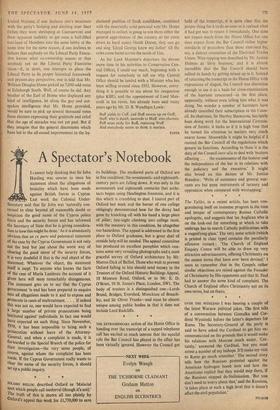HILAIRE BELLOC described Oxford as 'Malarial spot which people call
medeeval (though it's not)? The truth of this is shown all too plainly by Oxford's appeal this week for £1,750,000 to save its buildings. The medioeval parts of Oxford are in fine condition; the seventeenth- and eighteenth- century parts are falling down. It was only in the seventeenth and eighteenth centuries that archi- tects began using Headington freestone, and it is this which is crumbling to dust. I toured part of Oxford last week and the bursar of one college obligingly demonstrated how far the decay had gone by knocking off with his hand a large piece of pillar; late-night climbing into college must, with the masonry in this condition, be altogether too hazardous. The appeal is addressed in the first place to Oxford graduates, but a great deal of outside help will be needed. The appeal committee has produced an excellent pamphlet which con- tains some very revealing photographs and a most graceful survey of Oxford architecture by Mr. Marcus Dick of Balliol. Those who wish to prevent Oxford falling to bits should send money to the Trustees of the Oxford Historic Buildings Appeal, 18 Museum Road, Oxford, or to Mr. E. D. O'Brien, 10 St. James's Place, London, SW!. The body of trustees is a distinguished one—Lords Brand, Bridges, Evershed, Monckton of Brench- ley, and Sir Oliver Franks—and must be almost unique among public bodies in that it does not include Lord Radcliffe.


































 Previous page
Previous page